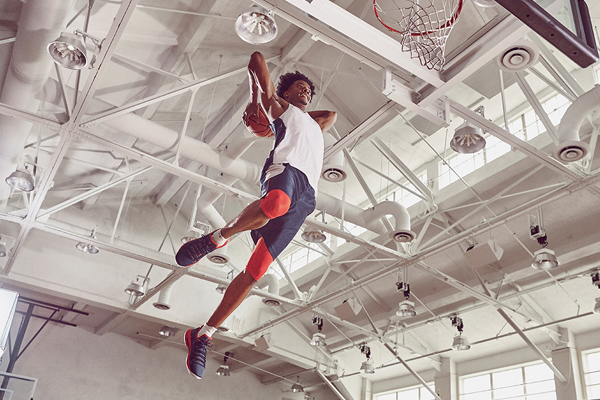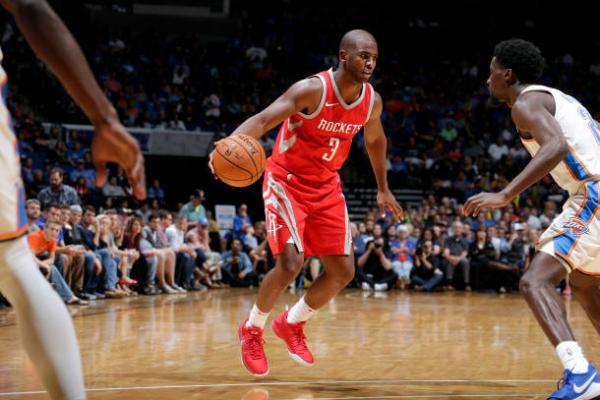
Each week in The Hoop Doctors “Skool for Ballers” we will bring you tips, analysis, or drills on various aspects of the game to help guide your training to be the best damn baller you can be! Don’t forget, being a GREAT baller takes as much work off the court as it does on!
One of the most admirable qualities in all basketball players–and certainly one that all aspiring players strive for–is the ability to execute stratospheric vertical leaps. Watch any basketball game on TV or in person, and it can be quite mesmerizing to see players seemingly soar to the top of the ring with the greatest of ease. It is a skill that seems to be reserved to only the elite of the basketball world, and it appears to be out of reach for the rest of us mere mortals. But is it?
The fact of the matter is that while some players seem to be genetically predisposed to being able to execute these fanciful flights into mid air, there are some things that we you can do in order to improve your vertical leaps significantly. Keep in mind that even if you have attempted to develop this skill in the past yourself, you may have been hindered with techniques that are less than effective. You may not have had the advantage of having a coach on your side to guide you through the intricacies of the discipline and you may even simply not know how to begin improving your vertical leaping range. In any case, here we offer you a few tips that might help you achieve the heights that you have previously only dreamed of.
The Importance Of Warm Up Exercises
Just as with all exercise, the warm up is a particularly crucial part of the process. This can be anything from a simple leg stretches, to more involved activities that seem more like full-blown exercise routines in themselves such as slow jogging that gradually increases in speed. Whatever it may be, the purpose of a warm up is to condition your body in preparation for the more strenuous activities that you will perform later on. As part of each warm up it is really important to take the time to do stretching of the quads, calves, and hamstrings. Over time, proper stretching and warm ups will increase your flexibility which in turn increases the power load (speed + strength) that your legs can handle in efficiently converting the energy of your movement forward, into a sharp movement upward towards the rim.
 Squatting Exercises
Squatting Exercises
There are many types and variations of the squatting exercise, but just be sure that whatever exercise you do that you can handle doing at least 15 repetitions of the weight you are using. The weight you use may increase as your strength increases, but remember you are not trying to bulk up here but instead increase the power capacity and response of the muscles you are targeting to increase your leaping ability. The squat is performed with your feet flat on the floor and by bending the legs at the knees and hips, lowering the torso between the legs, and then reversing direction to stand up straight again. The torso remains relatively upright throughout the movement. It acts as a supporting structure. Proper technique is critical, otherwise very serious injuries or gradual injury over a period of time can occur. In order to reach a range of motion beyond parallel, individuals without sufficient ankle flexibility may try putting a flat board beneath their heels to artificially improve their flexibility.
 Get Into Calf Raising Exercises
Get Into Calf Raising Exercises
Another exercise that can greatly benefit your attempts to jump higher is calf raises. In addition, these will also help you maintain proper balance, as well as give you added strength and accuracy with regard to foot position. Stand with your toes on the block of a standing-calf-raise machine and with your heels hanging off the end of the platform. Hook your shoulders under the pads or bar of the machine and ensure your legs are completely straight. Do not hunch, but rather keep your whole body straight. Keeping your legs straight, lower your heels and the weight as far as possible toward the floor. Then rise up on your toes as far as possible. Hold the contraction briefly at the top, then slowly return to the starting position. You can also point your toes in or out to vary the area of emphasis in your calf muscle.
 Don’t Overlook the Success from the Lunge
Don’t Overlook the Success from the Lunge
The lunge is a weight training exercise that is used to strengthen the quadriceps muscles, gluteal muscles and the muscles comprising the “hamstrings”. A long lunge emphasizes the glutes whereas a short lunge emphasizes the quadriceps.To perform the lunge, the individual stands with their feet shoulder-width apart, and then steps forward, landing with the heel first. The knee should be exactly at 90 degrees and directly over the toes. The motion is continued until the back knee is nearly touching the ground. Then they return to their starting position by driving upward forward with the front leg, and repeat the exercise by stepping forward with their other leg. The lunge can be performed without weights (i.e, bodyweight). However, weight trainers usually seek to increase the difficulty using either dumbbells (held in each hand) or a barbell with weights on it (held atop the neck and shoulders).
Final thoughts to Remember
As a final note with these quick tips and exercises for improving your hops, if you want to increase your vertical leap it’s not all about your leg strength. Make sure you are doing lower back extension and core exercises a couple times a week. And be sure to Skip Rope daily. I know skipping rope sounds a bit feminine but be sure to do it daily as this will increase your speed which will translate to power in the jump. And just think ‘hey, boxers skip rope’, i’d like to see you go tell Evander Holyfield that skipping rope is feminine!
To check out The Hoop Doctors other ‘Skool for Ballers’ posts click here. For more great basketball tips and drills information visit 43drills.com today!
43drills.com is a common place for coaches, players, and fans can come together to share, inspire, and improve! The purpose of 43 drills is help everyone improve their understanding, teaching, and techniques for basketball drills.

















